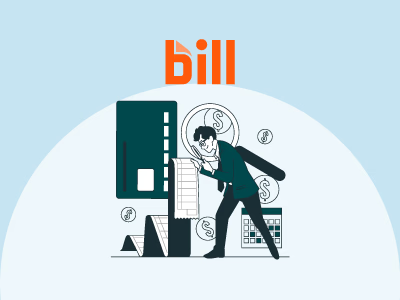
With the global account reconciliation software market projected to grow from $2.44 billion in 2025 to $6.15 billion by 2032, businesses are under growing pressure to improve their financial workflows. This rapid expansion highlights the need for reliable tools that can handle complex payment structures without manual errors.
For companies juggling multiple vendors and recurring payments—especially in healthcare—choosing the right accounting software is no longer optional. Enter Bill.com, a platform quietly powering payment automation behind the scenes. While its tools simplify payouts and invoicing, many users still find themselves puzzled by how to reconcile the platform’s clearing account.
This blog will answer how to reconcile Bill.com clearing account. We’ll walk you through a clear, step-by-step process that eliminates guesswork and keeps your books perfectly balanced.
Since BILL (formerly Bill.com) processes payments in daily batches, reconciling might seem confusing at first. However, once you follow this detailed guide, the process becomes much more manageable:

Step 1: Understand The Role Of Clearing Accounts
Before diving into the reconciliation process, it's important to know that Bill.com uses two default clearing accounts in your accounting system:
- BILL Money Out Clearing: for accounts payable and vendor payments
- BILL Money In Clearing: for accounts receivable and customer payments
These accounts are automatically used to sync bill payments and e-payments, separating them from the bank register to make reconciliation easier.
Step 2: Sync Your Bill.com Account With Your Accounting Software
Ensure that your Bill.com account is synced with your accounting software (like QuickBooks Online, NetSuite, or Xero). This step is necessary to pull in the required journal entries for the reconciliation process. The syncing process will:
- Link bill payments to the BILL Money Out Clearing account
- Record customer payments to the BILL Money In Clearing account
Note: The Clearing account should have a zero balance by the end of the day.
Step 3: Review The Daily Lump Sum Withdrawals And Journal Entries
Bill.com withdraws payments from your bank account in one or two lump sums each business day. These payments correspond to what has been scheduled before and after 3:00 pm Pacific Time (PT):
- First Withdrawal: Payments scheduled before 3:00 pm PT (bank day before process date)
- Second Withdrawal: Payments scheduled after 3:00 pm PT on the same day
Each lump sum withdrawal generates a Funds Transfer journal entry, which moves funds from the clearing account to the checking account.
- Debit: BILL Money Out Clearing
- Credit: Checking account
Ensure both entries are synced properly and reflect the exact amount withdrawn.
Step 4: Generate The Funds Transfer Detail Reports
To begin reconciling, you’ll need to refer to two specific reports available within your Bill.com dashboard:
- Funds Transfer Detail for BILL Payments (for money going out)
- Funds Transfer Detail for E-payments Received (for money coming in)
These reports will help you match each transaction processed in the clearing account with its corresponding bank entry.
Note: You can find these reports by clicking on ‘Reports’ in the navigation menu of your BILL account.
Step 5: Reconcile Using Zero Balances
When you're ready to reconcile:
- Open your accounting software and go to the reconciliation screen
- Select the applicable clearing account (either Money Out or Money In)
- Set both the beginning and ending balances to $0.00
- Clear all the transactions for the selected period (based on what’s shown in the reports)
If everything has synced and posted correctly, the clearing account will balance to zero by the end of the day.
Step 6: Handle Month-End Overlaps (For Receivables)
Customer payments can take 3–5 days to appear in your bank account after they’re scheduled. If you’re reconciling near the end of the month, some deposits may not reflect until the following month. In this case, it is suggested to extend your reconciliation period by a few days.
If you’re using Xero, be aware that reconciling the bank account alone does not mark the related line items in the clearing accounts as reconciled. You’ll need to manually mark each line item in the ‘Money Out or Money In Clearing accounts.’
Staying on top of your Bill.com clearing account isn’t just best practice—it’s a critical step in maintaining financial accuracy. With consistent reconciliation, you ensure that every payment processed through your system is properly recorded and reflected in your accounts.
By following the steps outlined above, you can confidently close your books each cycle without confusion or guesswork. Whether you're working with vendors or collecting from clients, keeping your clearing accounts balanced helps streamline operations and prevent costly discrepancies.
